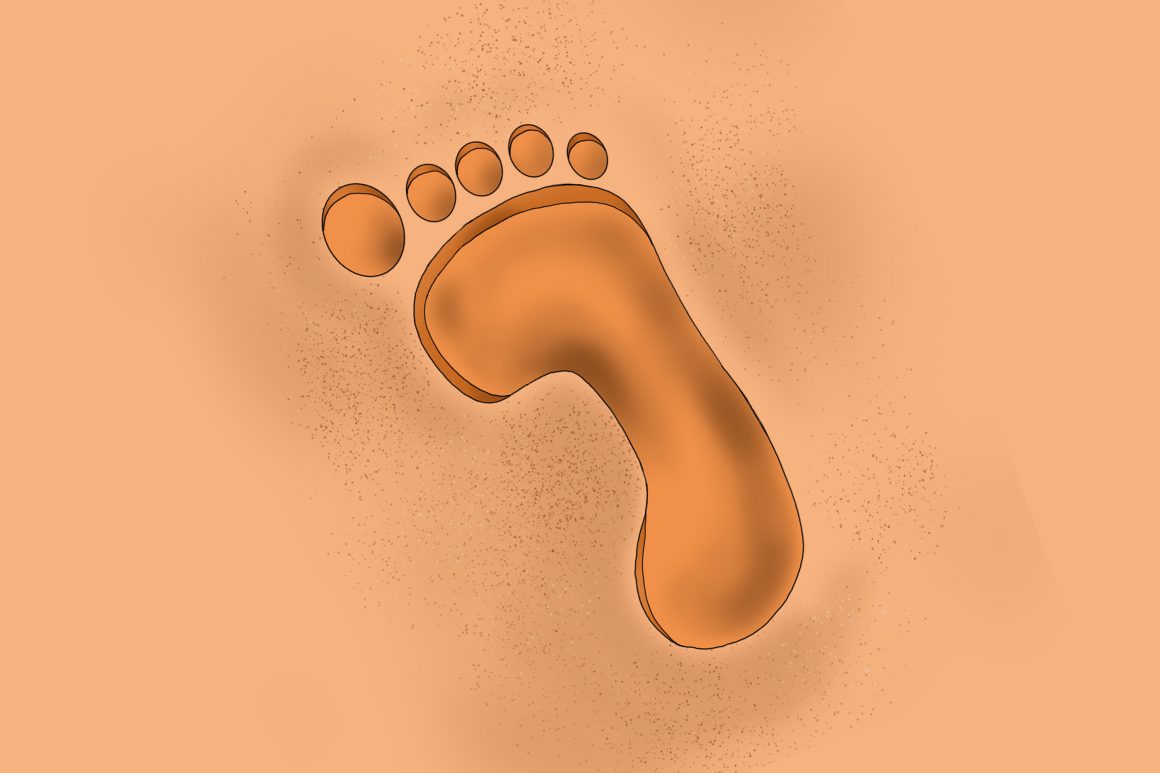
How a set of footprints may change our understanding of our arrival
By Vicky Li, October 24 2023—
Anatomically modern humans first evolved in Africa, though the story of how they slowly dispersed out becomes more complicated. Throughout the years, many theories have been proposed, with most proposing a date between 16,000-13,000 years on when they first arrived in the Americas. Two of the most popular theories are migration through the Bering Land Bridge, otherwise known as the Clovis First Model and the coastal migration theory.
The Clovis First Model proposes that the first people in the Americas came through a land bridge connecting Asia and North America. The name comes from a number of stone tools — the Clovis culture — that seem to represent the people who used them. The path of this migration model relies on the gap between the Cordilleran and Laurentide ice sheets, known as the Ice Free Corridor, and pinpointing when it was open is crucial to understanding the time frame of this theory. It’s thought that this path was open 13,800 years ago, though new evidence since then has revealed that that is too late of a date.
One challenge of archaeology is the issue of whether sites preserve themselves. With the rise of sea levels, many sites that may have existed in the past have now been submerged, leaving an incomplete history of our migration. The coastal migration theory, sometimes referred to as the Kelp Highway, is one example of where these issues arise. This theory pushes the arrival date of humans into the Americas a little earlier than the Clovis-First, placing the date at around 17,000 years ago. Rather than go through an ice-free corridor some 13,000 years ago, the coastal migration theory proposes that people came to the Americas along the Pacific Rim. Along this route, it’s proposed that coastal ecosystems such as the kelp forests would have been able to support such a migration.
With either of the leading theories, there is still no true consensus, as both have issues. The dates proposed by the Clovis First Model don’t encompass all the dates of the sites in the Americas, with the land bridge not being open until 13,800 years ago but there being sites in the Americas that are much older. However, the coastal migration model lacks a lot of information due to the rise of sea levels. Lack of evidence leaves a gap in our understanding of human migration. Science is always ongoing, however, and a recent discovery may revolutionize our understanding of this topic.
White Sands National Park is an important site to see how ancient humans interacted with the environment. Being home to a stunning array of prints, it offers a unique window into our past. It’s here where a new piece of this human migration puzzle was recently unearthed. In 2021, a team of researchers published dates for a set of human tracks in around the same layer as a set of mammoth tracks. When carbon dated, these tracks came out to be 23,000-20,000 years old, much older than what previous theories suggest.
These findings were met with plenty of skepticism. Due to the location where they were found, some suggested that environmental influences, specifically the fact that the site of these tracks used to be the edge of a beach, made the tracks seem older than they actually were. Extraordinary claims must be accompanied by extraordinary evidence after all, so researchers turned to seeds for an additional date. These were the seeds of Ruppia cirrhosa, seeds which also supported the radiocarbon dates, ranging from 23,000-21,000. Furthermore, since the initial publication in 2021, new dating methods using tree pollen and quartz grain have recently been used to corroborate the original dates.
Each dating method has its own drawbacks. Therefore, it is important to use many in tandem, which is exactly what the researchers did here. When multiple methods of dating line up to the same range, it is unlikely that everyone is wrong in the same way, bolstering the evidence that humans were in the Americas long before we previously thought.
Interestingly, this new evidence lines up with Indigenous accounts of the people of the Americas. Oral traditions have often stated that humans were here long before the previous estimates, something which is only confirmed through these new findings. There is much history that may no longer be tangible, such as the coastal sites that may now find themselves underwater, but stories might survive. Though evidence will always be important to understanding the world, cultural knowledge cannot be easily dismissed.
Science is an uncertain endeavour, but it is the best approximation of the truth. The recent discoveries at White Sands National Park warrant consideration and another look at our current models of human migration, but it’s sure to not be the final piece of evidence unearthed in our complex history. Humans may have been in the Americas much sooner than we once thought and, whether this information is further supported or disproven in the future, our understanding of it can only grow.
